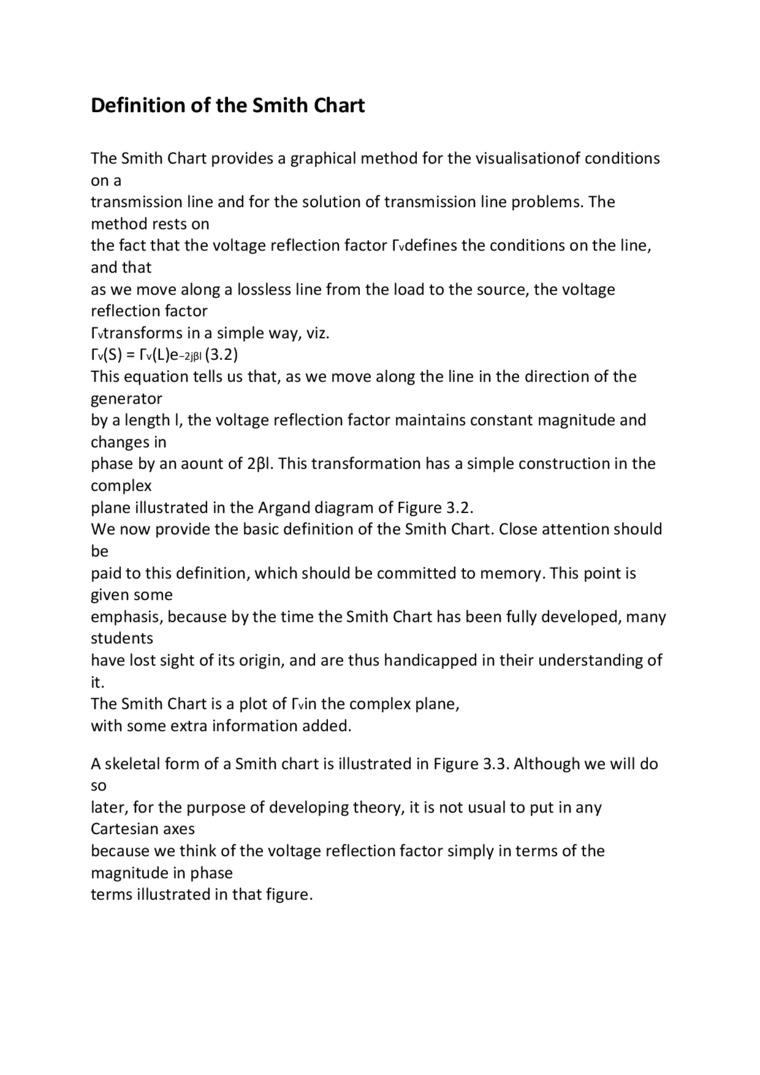70951

Definition of the Smith Chart
The Smith Chart provides a graphical method for the visualisationof conditions on a
transmission linę and for the solution of transmission linę problems. The method rests on
the fact that the voltage reflection factor Mefines the conditions on the linę, and that
as we move along a lossless linę from the load to the source, the voltage reflection factor
Tytransforms in a simple way, viz. l"v(S) = rv(L)e-2jpi (3.2)
This equation tells us that, as we move along the linę in the direction of the generator
by a length I, the voltage reflection factor maintains constant magnitude and changes in
phase by an aount of 201. This transformation has a simple construction in the complex
piane illustrated in the Argand diagram of Figurę 3.2.
We now provide the basie definition of the Smith Chart. Close attention should be
paid to this definition, which should be committed to memory. This point is given some
emphasis, because by the time the Smith Chart has been fully developed, many students
have lost sight of its origin, and are thus handicapped in their understanding of it.
The Smith Chart is a plot of Tvin the complex piane, with some extra information added.
A skeletal form of a Smith chart is illustrated in Figurę 3.3. Although we will do so
later, for the purpose of developing theory, it is not usual to put in any Cartesian axes
because we think of the voltage reflection factor simply in terms of the
magnitude in phase
terms illustrated in that figurę.
Wyszukiwarka
Podobne podstrony:
DSCN1677 26 Decyzja D Decyzja, zob. normy społeczne. Definicja sytuacji (ang. dęfinition of the situ
Acceptance of the engagement 1.1 Client and definition of the engagement The Management ofChina BPIC
1.3 Definition of the Problem 1.3.1 The need for implementing SCM as Web services
INTRODUCTION Term of information is in our civilization so broad that it is impossible to expect a d
601 1 Copyrighted MateriałINDEX The page number refers to the page on which the definition of the ne
DSCN1677 (4) 26 Decyzja D Decyzja, zob. normy społeczne. Definicja sytuacji (ang. definiiion of the
GEMB04 NOTES: 1. As in some of the other items on display at the V&AS th
SCAN0131 96 Clinical Anatomy of the Visual System 96 Clinical Anatomy of the Visual System FIGURĘ 5-
SCAN0145 178 Clinical Anatomy of the Visual System Epimysium Perimysium EndomysiumFIGURĘ 10-1 Connec
więcej podobnych podstron